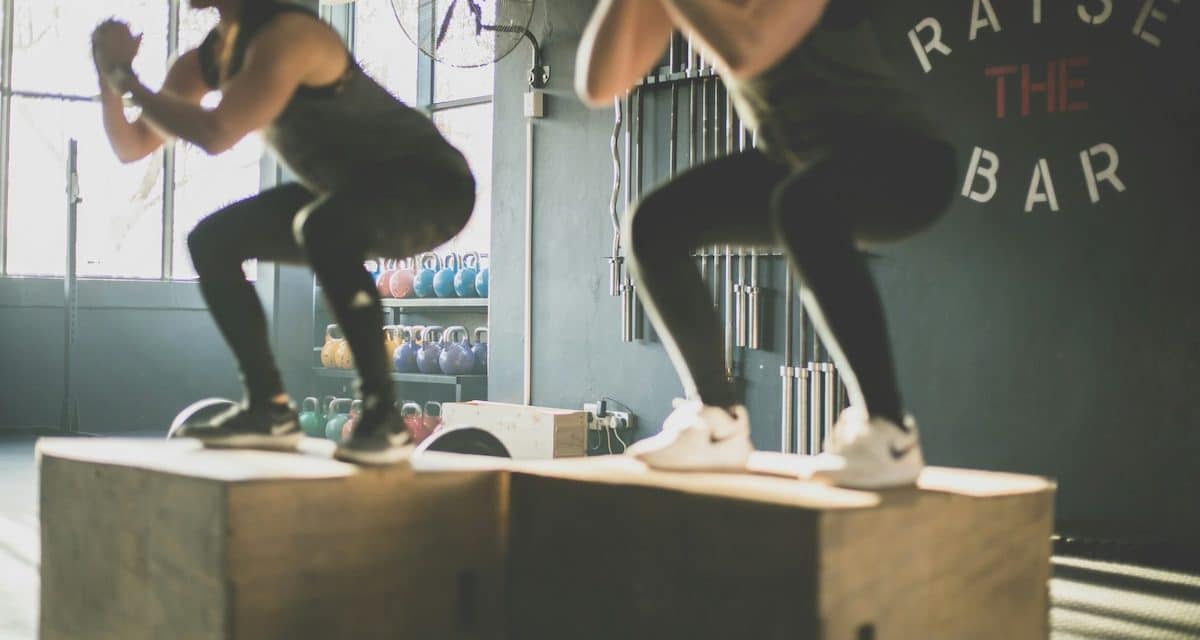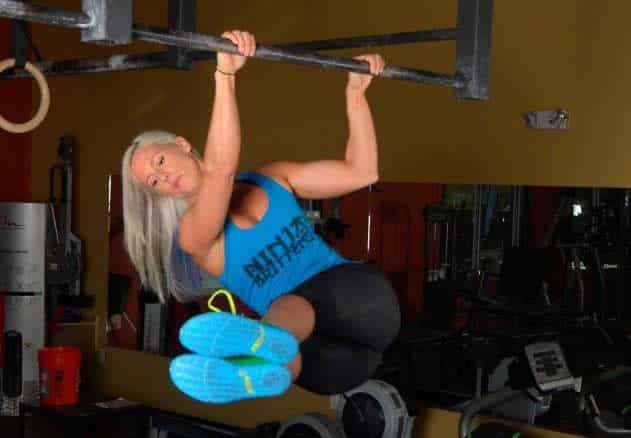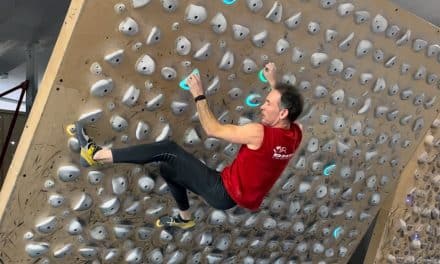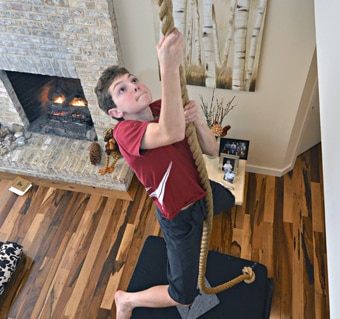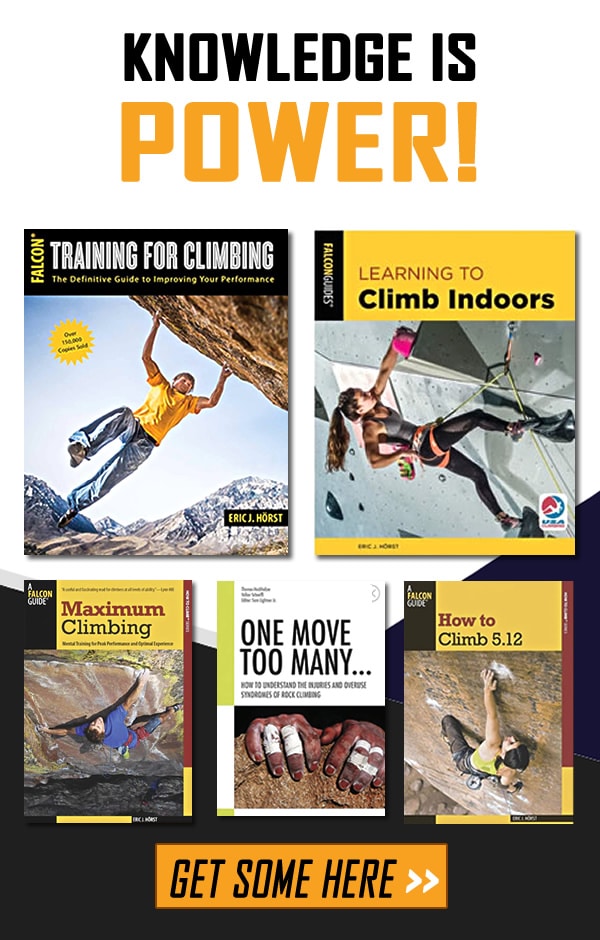Powerful climbing comes down to the rate of force development (RFD) in a climbing-specific movement. Training to become a more powerful climber, then, requires training to express your strength more quickly! Use these plyometric exercises to boost your climbing power.
Most of your climbing training should take place on the wall. After all, climbing is first and foremost a skill sport. You could spend hours each week getting jacked from powerlifting exercises in the weight room, but it won’t do much for your climbing if you can’t apply that power on the wall.
But let’s acknowledge the fact that climbing powerfully is hard on the fingers. Pulling, catching, and latching small holds at high speeds imparts intense stress on the soft tissues in your fingers. Big muscle groups like the quads, glutes, pecs, and biceps can handle significantly more stimulus than your fingers before breaking down, with a much faster recovery time to boot. With that in mind, it makes sense to take some of your power training off the wall to spare your fingers the strain.
Plyometric training works perfectly for that purpose. Think of plyometric exercises as “bursts” of explosive movement that recruit your fast-twitch muscle fibers. They’re especially applicable to climbing because they teach you how to generate power in certain parts of your body, then control the direction and intensity of its output. Since precision matters so much in climbing, the ability to internally regulate those factors comes in clutch.
Build these plyometric exercises into your routine for convenient, yet potent, power training practice for climbing!
Power Pull-Ups
When your fingers start talking back, take things to the pull-up bar instead. Power pull-ups are the closest you can get to working the same muscles and motions as climbing itself.
Hang from a pull-up bar with your palms facing out, keeping your shoulders slightly activated. Practice initiating as much momentum from your shoulders as you pull up powerfully toward the bar. Try to bring your chest up to the bar as quickly as possible using that initial momentum. Slowly lower back down to straight arms (still keeping your shoulders engaged) and hold still for one second to let the stored energy fade from the muscles and tendons. Each power pull-up should create its explosion of power, and not ride the wave of momentum created from the previous rep. Do three sets of three to five reps.
(You’ll notice that each of these exercises prescribes a range of reps rather than a specific number. That’s because the “right” number of reps depends on your personal power bank. We’re going for quality over quantity here. You can’t properly train power in a fatigued state. Pay careful attention to how much power you can generate with each rep. As soon as you notice your power dip within that range of three to five reps, stop!)

Plyometric exercises like power pull-ups combine strength with speed. Photo courtesy of Charlotte Karlsen.
Power Push-Ups
You already know the value of push-ups as an antagonist exercise that balances out all the pulling we do in climbing while also improving your compression and mantling skills. It’s no different with this plyometric variation. For every set of power pull-ups, match it with a set of power push-ups for a well-rounded approach to upper-body power training.
Start in a straight-arm plank position. Engage your core, and slowly lower down until your chest hovers right off the ground. Push back up to straight arms as quickly as possible. You might even try to get some air time at the top–can you clap your hands together while in air? Either way, think about pushing the ground away from you with as much force as you can muster. Slowly lower back down and repeat for three sets of three to five reps at max intensity.
Box Jumps
Many dynamic movements in climbing begin in the legs. Box jumps help climbers practice generating dynamic power from the legs and allowing it to create a ripple effect up through the rest of the body. By the top of each box jump, you should feel your arms and core finish the arc of activation that your legs create.
Set up a box in front of you at a height within your range of motion. Check the height by stepping into a static lunge on top of the box. If it feels relatively comfortable to make the step without too much of a stretch, that’s a great place to start. You can always increase the height as you go, but starting out small gives you the chance to build confidence and perfect your form for higher jumps.
Standing in front of the box, squat down with your hands together in front of your chest. Push off the ground with the balls of your feet while flinging your arms back behind you for momentum. Land with both feet on top of the box at the same time and in line with one another. Think about landing lightly and sprightly rather than letting your weight sink into your feet. Stand up straight on top of the box, then make your way back down to the ground. Sink back down into a squat and repeat for three sets of five to ten reps.
Jump Lunges
Box jumps are most applicable for full dynos when all points come off the wall at once. Jump lunges are here for situations that call for unilateral power, i.e. pushing with one leg at a time.
Make your way into a lunge with one foot out in front of you and your knee bent at a 90-degree angle. The ball of your back foot will push into the ground with your heel lifted and your leg straight. Squat down slightly for momentum, then explode up and switch legs mid-air so you land in the opposite stance with your back leg now in front with a bent knee and your front leg straightened behind you with the ball of your foot pressing into the ground. Think about maximizing height and air-time during the jump. Repeat in reverse to return to your original stance. Continue for three sets of five to ten reps per leg.
Skaters
Skater lunges take all the benefits of jump lunges and transfer them to a lateral plane of movement. They support climbers in moving powerfully not just upwardly but also from side-to-side.
Start by standing on one leg, slightly bent, with your other leg tucked behind it in a “curtsy” position. Push laterally off of the leg in front to leap as far as possible to the side and land on the other foot, bringing the other leg behind it in a curtsy. Think more about distance than height for this exercise. Repeat in reverse to return to your original stance. Use your arms for momentum, flinging them in the direction you’re headed as you leap. Repeat for three sets of five to ten reps on each side.
Mountain Climbers
This core-blaster of an exercise pulls double-duty as a power trainer for the quads and hip flexors. Mountain Climbers will have you covered the next time you need to bring your foot up fast to a high, tenuous toehold before your abs give out.
Start in a straight-arm plank position with both feet behind you. Pull one leg forward as quickly as possible by pushing off of the ball of your foot and driving your knee towards your chest. Alternate legs, sending the first leg back to its starting stance while the other takes its place at your chest. Think about creating enough force with each drive to ram your knee right into your nose (don’t worry, you won’t). Repeat for three sets of 10 to 20 reps per leg.
Related Articles:
- Transitioning from Cragging Season to Training Season
- 4 Fingerboard Training Protocols That Work
- 3 Tips for Off-the-Wall Crosstraining for Climbing
- Power Bouldering for Dynamic Drive on the Wall
- Limit Bouldering for Max Climbing Strength and Power
Copyright © 2000–2024 Lucie Hanes & Eric J. Hörst | All Rights Reserved.

